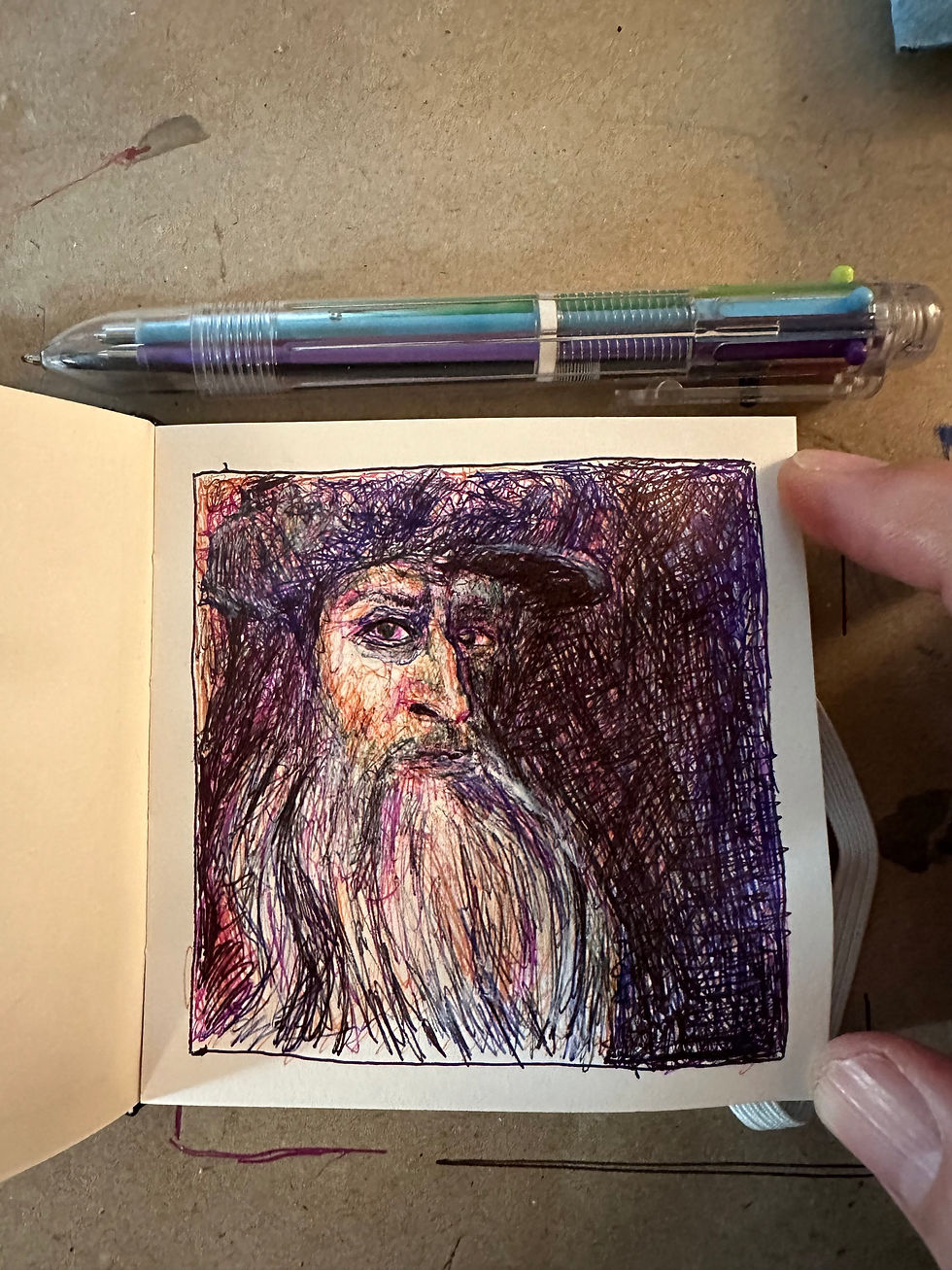We Don’t Need Another Leonardo da Vinci… The World Needs You
- tmichaelniemanart
- Jan 26
- 3 min read
Art is often perceived as a domain requiring innate talent or specialized training. However, the skills developed in seemingly unrelated professions can provide a strong foundation for becoming a successful landscape painter (or just about any creative pursuit). These transferable abilities, ranging from observation and technical precision to emotional expression and project management, can enrich an artist's practice and offer unique perspectives in their work.

Observation and Attention to Detail
Professions such as architecture, science, and medicine cultivate keen observational skills and an acute attention to detail. An architect, for example, must understand spatial relationships and perspectives, skills directly applicable to capturing depth and scale in a landscape painting. Similarly, a scientist or a doctor trained to notice subtle changes in patterns—whether in data or symptoms—can use this ability to discern the nuanced interplay of light, shadow, and texture in a natural setting. These professions train individuals to see beyond the obvious, a vital trait for creating vivid and lifelike landscapes.
Problem-Solving and Adaptability
Engineers, software developers, and other problem-solving professionals bring analytical thinking and adaptability to their work. In landscape painting, these skills are crucial when dealing with challenges like changing weather conditions during plein air painting or resolving compositional issues in a studio setting. An engineer’s capacity to break down complex systems into manageable parts mirrors the process of simplifying a scene into shapes, colors, and forms on canvas.

Patience & Discipline
Careers in fields like education, law, or research demand patience, perseverance, and a commitment to long-term goals. A teacher, accustomed to nurturing gradual growth in students, can channel this same patience into mastering the incremental learning curve of painting techniques. Similarly, a researcher’s methodical approach to experimentation and revision mirrors the iterative process of refining artistic skills.
“Patience serves as a protection against wrongs as clothes do against cold.”
Leonardo da Vinci
Creative Problem-Solving and Innovation
Creative professions such as graphic design, writing, or marketing develop a sense of storytelling, composition, and visual appeal. Writers, for instance, craft narratives by weaving elements like setting and mood, which translates well into painting atmospheric landscapes that evoke emotion. Graphic designers, trained in the principles of color theory and balance, often excel at creating harmonious compositions and striking visual contrasts.
“how the ability to make connections across disciplines—arts and sciences, humanities and technology—is a key to innovation, imagination, and genius.”
Walter Isaacson, in Leonardo da Vinci
Emotional Expression and Empathy
Professions like counseling, psychology, or social work focus on understanding human emotions and experiences. These skills can deepen a painter’s ability to imbue their landscapes with emotional resonance, transforming a mere depiction of nature into a compelling narrative. A counselor’s insight into the human condition can help a landscape painter create works that connect deeply with viewers, evoking feelings of serenity, awe, or nostalgia.
Technical Skills and Precision
Professions such as carpentry, machining, or other trades requiring manual dexterity and precision are directly applicable to the technical demands of painting. These trades hone fine motor skills and a familiarity with tools, which can easily translate into mastering brushes, palette knives, and other painting instruments. Additionally, a carpenter’s understanding of structure and material can inform a painter’s approach to composition and texture.
Project Management & Time Management
Professions in management, event planning, or administration teach skills in organization, time management, and goal-setting. These are invaluable for landscape painters who need to balance the creative process with practical concerns like meeting deadlines for exhibitions or maintaining a productive workflow. An event planner’s ability to coordinate complex logistics can translate into planning plein air painting sessions or managing studio time effectively.

Cultural and Historical Awareness
Historians, anthropologists, and travel professionals often possess a deep understanding of cultural and historical contexts. This knowledge can inspire landscape painters to incorporate cultural elements into their work or draw from historical art movements. An anthropologist’s appreciation for how landscapes shape human identity might inspire a painter to explore the relationship between people and the natural world in their art.
Resilience and Emotional Intelligence
Professionals in high-pressure fields like healthcare, emergency services, sales or the military develop resilience and emotional intelligence, traits that are essential for overcoming creative blocks, rejection and/or criticism in the art world. The ability to remain calm under pressure and persevere through challenges enables these individuals to approach the often unpredictable and demanding nature of painting with confidence.

Final Thoughts
The skills honed in various professions, while seemingly unrelated to art, can provide a robust toolkit for developing as a landscape painter. Whether it’s the precision of an engineer, the empathy of a counselor, or the creativity of a designer, these abilities enrich an artist’s approach, helping them to see the world through unique lenses. By recognizing and embracing the overlap between their professional expertise and artistic practice, individuals from diverse backgrounds can create landscapes that are not only visually stunning but also rich in depth and meaning.
Comments